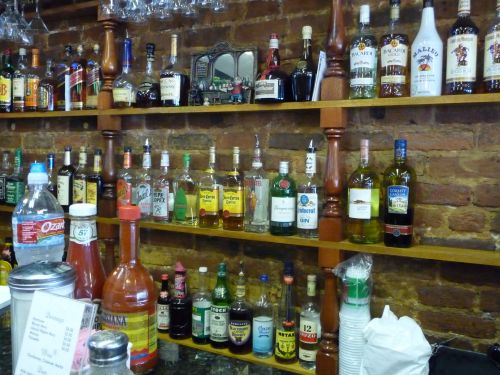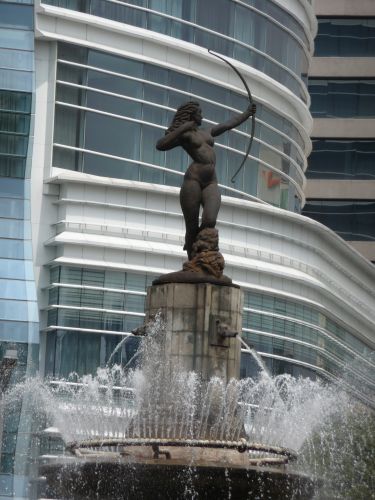Nick Gilman and carnitas
In "Regrets," one of the short stories in my book Travel Advisory, a character refers to carnitas as "Swollen slabs of brown and fatty flesh -- hooves and haunches, maws and jaws, cross-hatched tripes, deflated udders, unidentifiable viscera gleaming golden with grease. Stringy, squiggly, plump as pillows, flat as pennies. All on offer in a hole in the wall, protected behind a glass shield, kept warm under an infrared lamp. Carnitas: Mexican mystery meat. This is as deep into a pig as you can go, puerco profundo."
Carnitas are, in fact, hunks of pork, shoulder or butt, mixed with the rest of the pig -- liver, heart, snout, skin, even reproductive organs. They are braised in water or milk, seasoned, subsequently fried and then chopped into bits before being made into tacos. The squeamish order pura maciza (only the white-meat flesh of the pig, unadorned by anything that has to do with bodily functions). But the surtida -- the whole lot mixed together -- is sublime. Before I was diagnosed with high cholesterol, I ate it all the time.
My friend Nick Gilman, pictured above at a presentation for his charming culinary guidebook, Good Food in Mexico City, not long ago on his website touted La Reina de la Roma, on Calle Campeche between Monterrey and Medellín, as his favorite purveyor of carnitas. I couldn't agree with him more. Whenever I whistle in the dark past the cardiologist, I make a beeline for that changarro.
Art and theft

The Colonia Buenos Aires, in central Mexico City, is full of chop shops where you can buy spare parts or get your car repaired at bargain prices. Auto theft is a common crime in the city, and many claim that the neighborhood's cut-rate rear-view mirrors, windshields, radios and steering wheels come straight from stolen vehicles.
Don't lose heart, though: your purloined auto may have had a higher purpose. On the traffic island in the middle of Calle Dr. Vertiz, just north of the Viaducto, there is a series of sculptures made from auto parts. Of course no one wants to get their car ripped off, but show some sympathy: We all know how tough it is for struggling artists to acquire their materials.
Swill
Once you leave Mexico, drinking tequila is a dodgy issue. Take a look at the bar at Mena's Palace, a beloved luncheonette in the French Quarter of New Orleans. On the middle shelf you can find a couple of brands of tequila, "Juarez" and "Pepe Lopez," that I have never seen in Mexico. Call me skeptical, but I wouldn't disinfect my bathtub with that stuff. (I would also stay away from that bottle of "Aristocrat" gin.) Something tells me that Mena's has Greek owners, because on the bottom shelf they carry both Metaxa, a brandy I remember from my sojourn in Athens as a 20-year-old, and several brands of ouzo, including one that appears to be twelve years old.
Mujerona
After the Angel of Independence, this statue of Diana, the Roman goddess of the hunt, is arguably the most well-known landmark in Mexico City. You can find her on Paseo de la Reforma, not far from Chapultepec Park.
A well-worn anecdote has it that in 1944, two years after the monument was unveiled, Soledad Orozco, wife of President Manual Avila Camacho, was so scandalized by the statue's voluptuous nudity that she demanded it be covered with a loincloth. The art world's disapproval of her position was eclipsed by the support she got from the National League of Decency and Archbishop Luis María Martínez. The sculptor, Juan Fernando Olaguibel, was forced to concede her wish.
In 1967, President Gustavo Díaz Ordaz decreed that the statue be returned to its original state. Olaguibel was obliged to start from scratch, as removing the loincloth would have caused too much damage to the first statue. The ceremony of its unveiling happened in the middle of the night, so as not to cause more scandal.
The identity of the model -- Helvia Martínez Verdayes -- wife of a one-time director of the state oil monopoly, PEMEX -- was not revealed until 1992.




